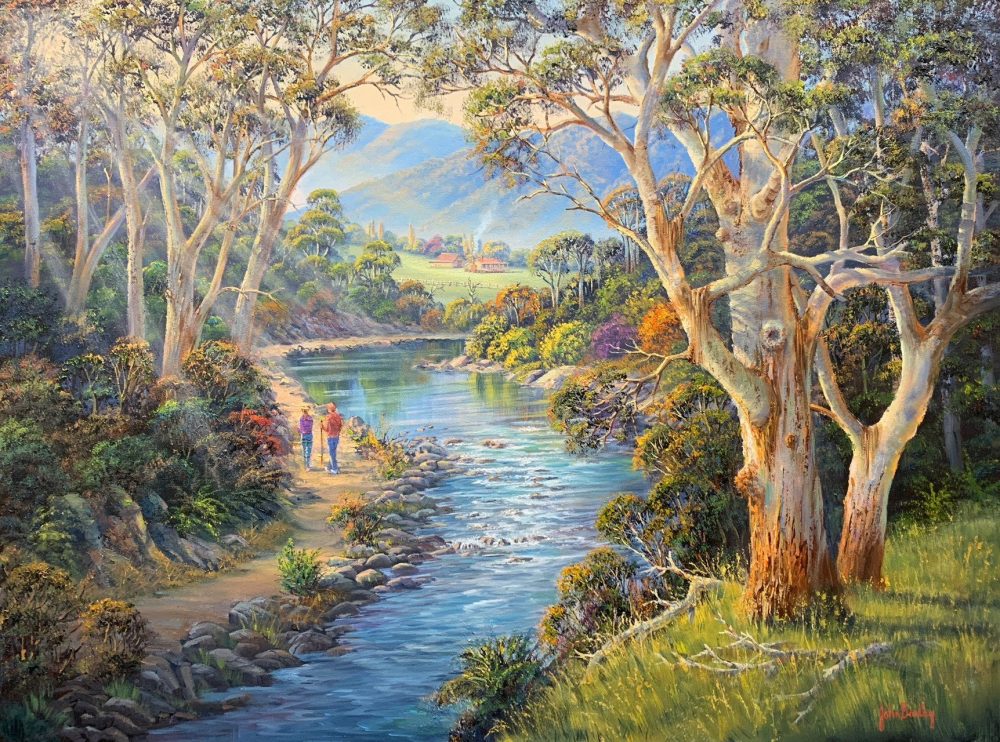Unveiling the Art of Australian Landscape Storytelling
Investing in art is more than acquiring a painting; it’s about entering a narrative, one woven through brushstrokes, colors, and the artist’s vision. When considering the work of an Australian landscape artist, the ability to tell a compelling story is often a key factor that sets exceptional artwork apart. In this blog, we will explore the top techniques to recognize if an Australian landscape artist is a skillful storyteller.
Mood and Atmosphere: Setting the Scene
A proficient Australian landscape artist can transport you to the heart of the landscape, evoking emotions and a sense of place. Look for artwork that skillfully captures the mood and atmosphere of the land. Whether it’s the fiery hues of an outback sunset or the serene tranquility of a coastal sunrise, the painting should immerse you in its unique ambiance, making you feel like you’re physically present within the landscape.
Narrative Composition: Visual Storytelling
The composition of an artwork is the artist’s way of narrating their tale. A good storyteller uses compositional elements to guide your eye through the painting, revealing different aspects of the story. Pay attention to how the artist directs your focus, whether it’s a meandering creek leading to a distant mountain or a trail winding through a forest. Each element should contribute to the larger narrative, inviting you to explore and interpret the story.
Detail and Precision: Painting the Plot
A keen eye for detail is another hallmark of a skilled landscape storyteller. Examine the painting closely; does it reveal intricate textures, fine details, and subtle nuances? An artist who invests time in capturing the intricate elements of the land demonstrates a commitment to storytelling. These details not only enhance the painting’s visual appeal but also provide layers of depth and meaning to the narrative.
Emotive Brushwork: Conveying Feelings
An Australian landscape artist with storytelling prowess knows the language of brushwork. Brushstrokes convey more than just physical attributes; they convey emotions and energy. Observe the artist’s brushwork – is it bold and vigorous, reflecting the power of the landscape, or delicate and refined, suggesting a sense of tranquility? The way brushwork is employed should resonate with the narrative’s emotional undertones.
Narrative Titles: Clues to the Tale
The title of an artwork is often a window into the artist’s narrative. A skilled storyteller selects titles that complement and deepen the viewer’s understanding of the painting. When examining Australian landscape art, consider how the title enhances your connection to the land and the story it tells. Titles can provide valuable insights into the artist’s intention and perspective.
**6. Consistency and Growth: A Series of Stories
Seasoned Australian landscape artists often share their stories across multiple works. Investigate whether the artist has created a series of paintings that explore different facets of the same landscape or theme. This commitment to storytelling can provide a richer and more profound connection to the land, offering a diverse range of narratives to explore.
In conclusion, recognizing the storytelling prowess of an Australian landscape artist involves delving beneath the surface of the canvas. Pay attention to mood, composition, detail, brushwork, and titles – these elements collectively reveal the artist’s ability to transport you into the heart of their narrative. As you embark on your art investment journey, remember that it’s not just a painting you’re acquiring; it’s a compelling story waiting to be told and cherished for generations to come.
ABOUT JOHN BRADLEY – John A. Bradley has worked as a professional artist for over 30 years and ran his own successful Art School in Sydney for 15 years.
If you are interested in exploring the art of John Bradley click here www,johnbradleyart.com/originals/

